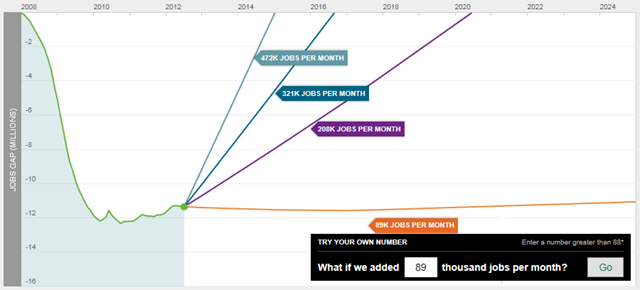Graph of the Day: Years to Recover U.S. Employment Rate to Pre-2008 Level
Each month, The Hamilton Project examines the “jobs gap,” which is the number of jobs that the U.S. economy needs to create in order to return to pre-recession employment levels while also absorbing the people who enter the labor force each month. This chart shows how the jobs gap has evolved since the start of the Great Recession in December 2007, and how long it will take to close under different assumptions for job growth. If the economy adds about 208,000 jobs per month, which was the average monthly rate for the best year of job creation in the 2000s, then it will take until June 2020—or 8 years—to close the jobs gap. Given a more optimistic rate of 321,000 jobs per month, which was the average monthly rate for the best year of job creation in the 1990s, the economy will reach pre-recession employment levels by August 2016—not for another 4 years. *88,000 jobs is the average assumed labor force growth per month from January 2012-December 2025, therefore the economy must add at least that many individuals to close the jobs gap. Any replication of this chart should be credited to The Hamilton Project at the Brookings Institution. For more information, please contact us at info@hamiltonproject.org.
